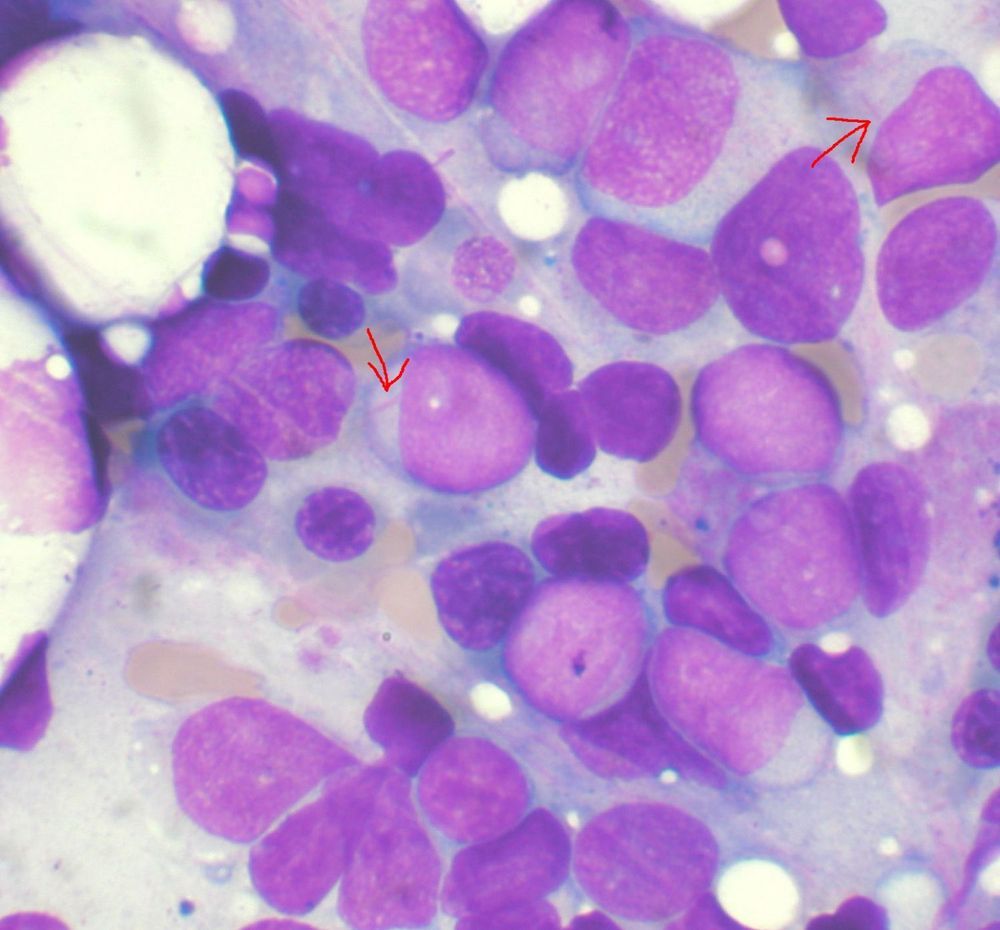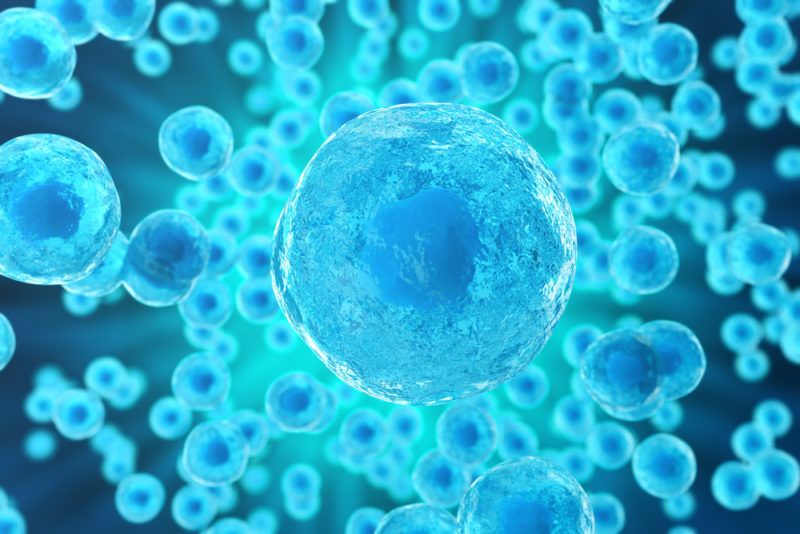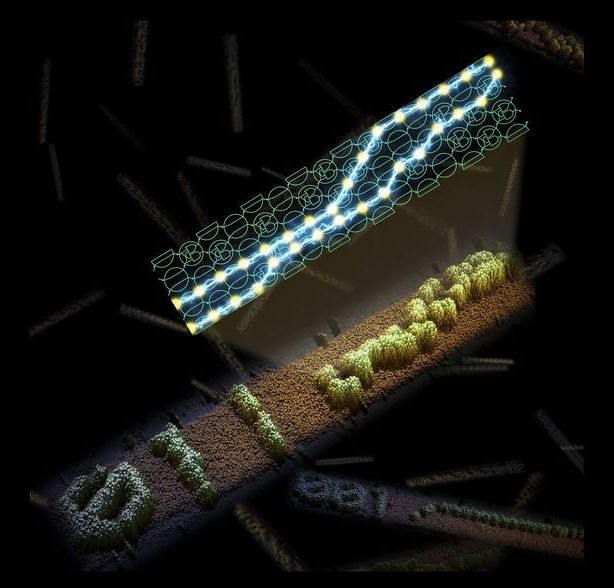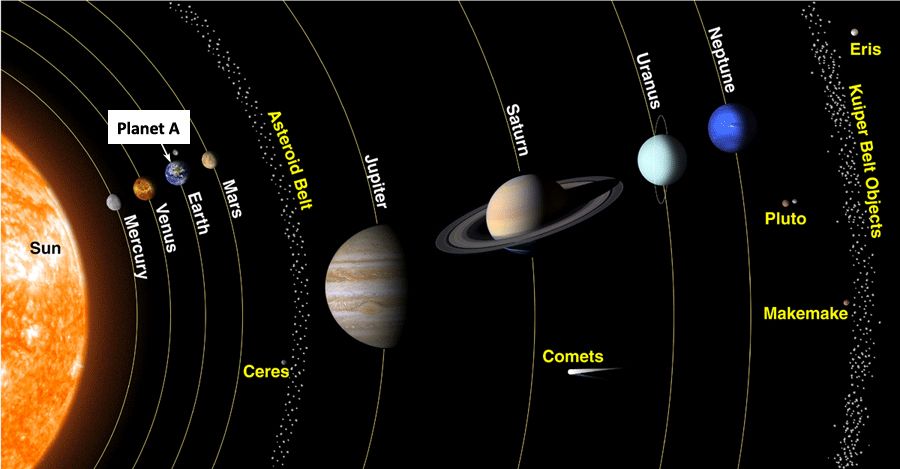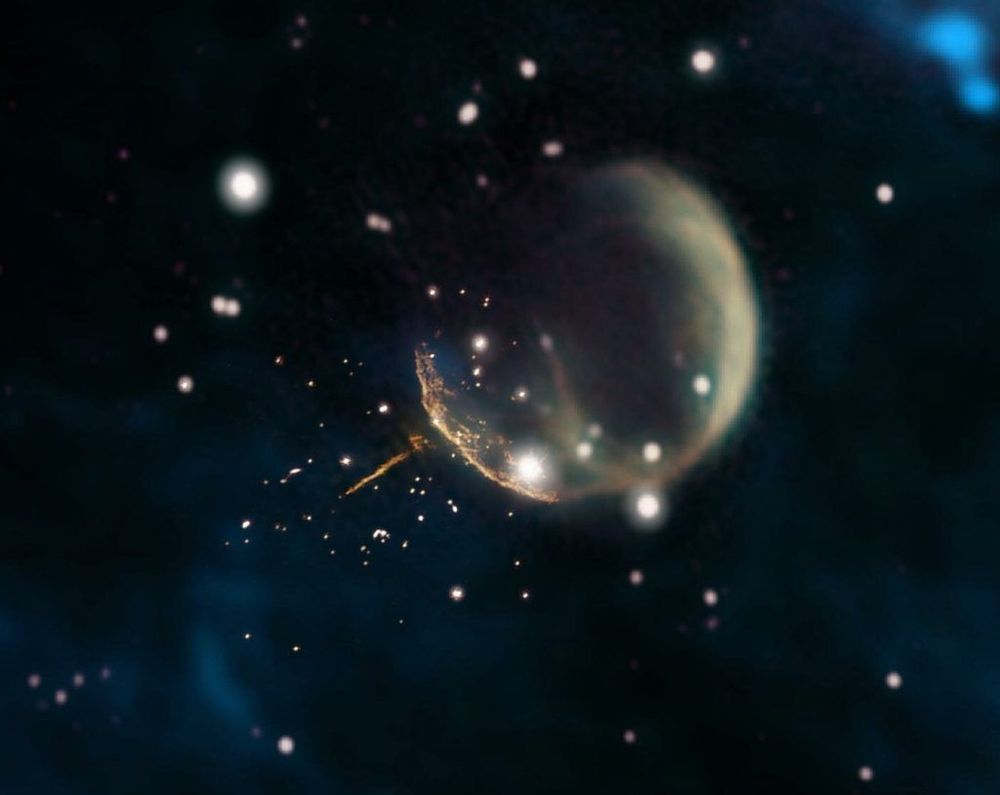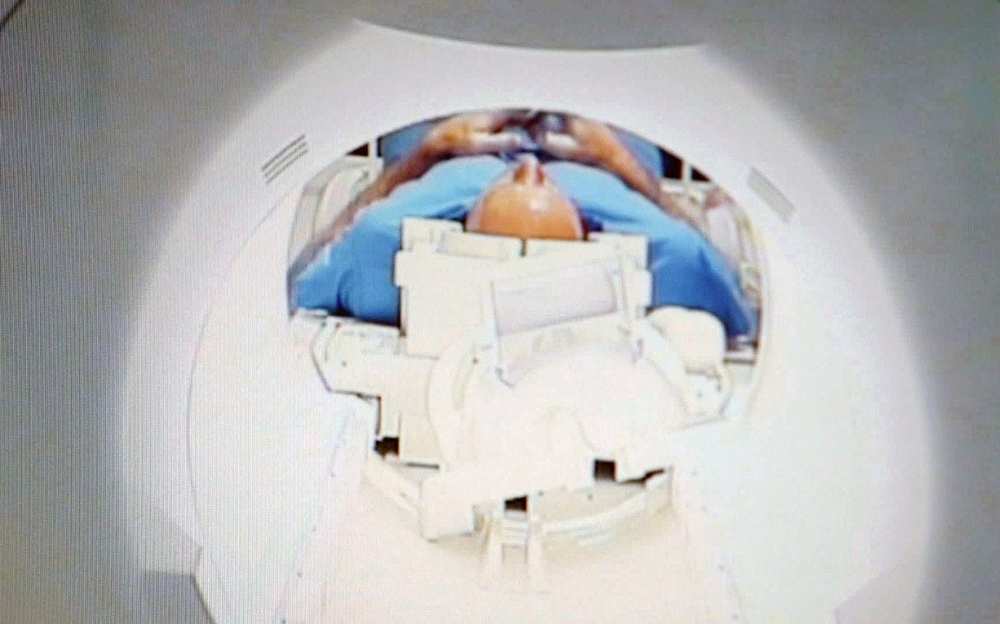Page 8998
Mar 21, 2019
Research paves way for new source for leukemia drug
Posted by Quinn Sena in categories: biotech/medical, chemistry
Chemistry researchers at Oregon State University have patented a method for making anti-leukemia compounds that until now have only been available via an Asian tree that produces them.
The synthesis of cephalotaxine and homoharringtonine (HHT) paves the way toward less-expensive, more readily available leukemia drugs whose production is not subject to the risks and inefficiencies associated with harvesting natural sources.
Also, the synthesis of cephalotaxine opens the door to preparing other, structurally related compounds for evaluation as potential new cancer drugs.
Mar 21, 2019
NMN, NAD+ and the Plasma Membrane
Posted by Steve Hill in categories: biotech/medical, genetics, life extension, robotics/AI
Earlier this year, we hosted the Ending Age-Related Diseases 2018 conference at the Cooper Union, New York City. This conference was designed to bring together the best in the aging research and biotech investment worlds and saw a range of industry experts sharing their insights.
Joe Betts Lacroix of Y Combinator and Vium discusses the different ways in which entrepreneurs can focus on overcoming the diseases of aging, namely direct, indirect, and money-first approaches, and the strengths and weakness of each.
Joe was the primary technical founder of hardware/software startup OQO, which entered the Guinness Book of World Records for building the smallest fully featured PC. His experience spans from biotech research to electronics design. Very experienced in invention, prosecution and monetization of intellectual property, he has over 80 patents granted and pending in fields ranging from biophysics and safety systems to antennas, thermal systems, user interfaces, and analog electronics. He has written numerous peer-reviewed publications in fields such as biophysics, genetics, electronics, and robotics. Joe holds a Harvard A.B., an MIT S.M. and a Caltech research fellowship.
Mar 21, 2019
Gut Bacteria Contribute to Vascular Aging
Posted by Steve Hill in categories: biotech/medical, life extension
A new publication from researchers at the University of Colorado Boulder shows how gut bacteria increase the risk of cardiovascular disease by contributing to the stiffening of the blood vessels during aging. This study is the first to demonstrate that changes to the gut microbiome promote vascular aging and harm health [1].
The researchers treated groups of young and old mice with a range of antibiotics that are known to kill gut bacteria. Following this, they examined the vascular systems of the mice, particularly the lining of the blood vessels (endothelium) and the stiffness in their large arteries. Additionally, the researchers measured a number of biomarkers, including free radicals, antioxidants, pro-inflammatory cytokines, and nitric oxide in the blood.
After 3–4 weeks of treatment, the researchers once again measured the biomarkers and looked at the vascular system. There was no change in the young group of mice; however, the old mice saw significant improvement in both vascular health and biomarkers. The researchers note that the treatment had suppressed the microbiome of the aged mice and, in doing so, improved their health. Therefore, they concluded that something in the microbiome of old mice was contributing to vascular aging.
Mar 21, 2019
Computer Scientists Create Programmable Self-Assembling DNA
Posted by Paul Battista in categories: biotech/medical, computing, engineering, information science
Computer scientists at the University of California, Davis, and the California Institute of Technology have created DNA molecules that can self-assemble into patterns essentially by running their own program. The work is published March 21 in the journal Nature.
“The ultimate goal is to use computation to grow structures and enable more sophisticated molecular engineering,” said David Doty, assistant professor of computer science at UC Davis and co-first author on the paper.
The system is analogous to a computer, but instead of using transistors and diodes, it uses molecules to represent a six-bit binary number (for example, 011001). The team developed a variety of algorithms that can be computed by the molecules.
Continue reading “Computer Scientists Create Programmable Self-Assembling DNA” »
Mar 21, 2019
NASA Confesses to Dosing Americans with Air-borne Lithium & Other Chemicals
Posted by Victoria Generao in category: government
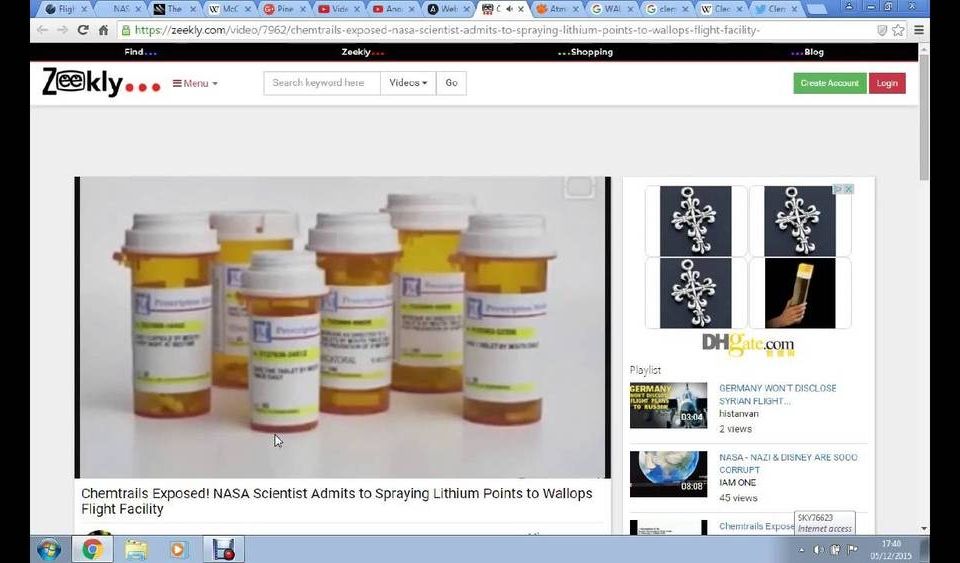
Lithium alters how we think by changing the levels of serotonin and norepinephrine secreted by our endocrine system. But the government is polluting our environment with the stuff.
Mar 21, 2019
We don’t need a “Planet B”. We have an entire Solar System
Posted by Adriano Autino in categories: climatology, economics, health, space
A million and a half students, even very young ones, took to the streets Friday March 15th, in two thousand cities around the world, for the climate, responding to a Greta Thunberg’s call. Greta is a 16-year-old student in Stockholm: “I will not stop. Not until greenhouse gas emissions have fallen below the alarm level.” Considering the great support she had, it would seem that students were not waiting for anything else, with great outcry of the ecologists of various tendencies, who have for years repeated the same call, without being able to arouse mass movements of this magnitude.
There is no doubt that we are on the verge of great changes. The automotive industry — by far a leading industry in the world economy — is about to collapse, because it has not been able to innovate in time, and now it does not in fact have ready solutions, to satisfy a market that no longer intends to exchange mobility with health. Such imminent collapse will not do any good to economy. It will also offer vampire rulers new opportunities to increase the taxation, already exorbitant in many countries. And no one seems to realise that if producers die as a social category, consumers will soon die too, as they are the same people. There is no doubt, moreover, that the ruling politicians, more and more void of any basic culture, will find many ways to manage what Serge Latouche (in his essay on the so-called “happy de-growth”) called “inevitable social problems following de-growth”.
Mar 21, 2019
Quantum Scarring Appears to Defy Universe’s Push for Disorder
Posted by Genevieve Klien in categories: particle physics, quantum physics
One of the first quantum simulators has produced a puzzling phenomenon: a row of atoms that repeatedly pops back into place. Physicists have been racing to explain what might be going on.
Mar 21, 2019
“Escaping the Milky Way” –Ghostly Neutron Star Racing Through Galaxy at 2.5 Million MPH
Posted by Genevieve Klien in categories: cosmology, particle physics
Astronomers observed a ghostly pulsar, a superdense, rapidly spinning neutron star exploded from a supernova 10,000 years ago, racing through space at nearly 2.5 million miles an hour—so fast it could travel the distance between Earth and the Moon in just 6 minutes. The discovery was made using NASA’s Fermi Gamma-ray Space Telescope and the National Science Foundation’s Karl G. Jansky Very Large Array (VLA).
The pulsar lies about 53 light-years from the center of a supernova remnant called CTB 1. Its rapid motion through interstellar gas results in shock waves that produce the tail of magnetic energy and accelerated particles detected at radio wavelengths using the VLA. The tail extends 13 light-years and clearly points back to the center of CTB 1.
This one, dubbed PSR J0002+6216 (J0002 for short), sports a radio-emitting tail pointing directly toward the expanding debris of a recent supernova explosion. “Thanks to its narrow dart-like tail and a fortuitous viewing angle, we can trace this pulsar straight back to its birthplace,” said Frank Schinzel, a scientist at the National Radio Astronomy Observatory (NRAO) in Socorro, New Mexico. “Further study of this object will help us better understand how these explosions are able to ‘kick’ neutron stars to such high speed.”
Mar 21, 2019
Childhood trauma scars the brain and boosts depression risk
Posted by Genevieve Klien in categories: health, neuroscience
Childhood trauma such as neglectful parenting causes physical scarring to the brain and increases the risk of severe depression, a new study has found.
For the first time, scientists have linked changes in the structure of the brain both to traumatic early-years experiences and poor mental health in later life.
Published in the Lancet, the study found a “significant” link between adults who had experienced maltreatment as children with a smaller insular cortex, part of the brain believed to help regulate emotion.
Continue reading “Childhood trauma scars the brain and boosts depression risk” »

